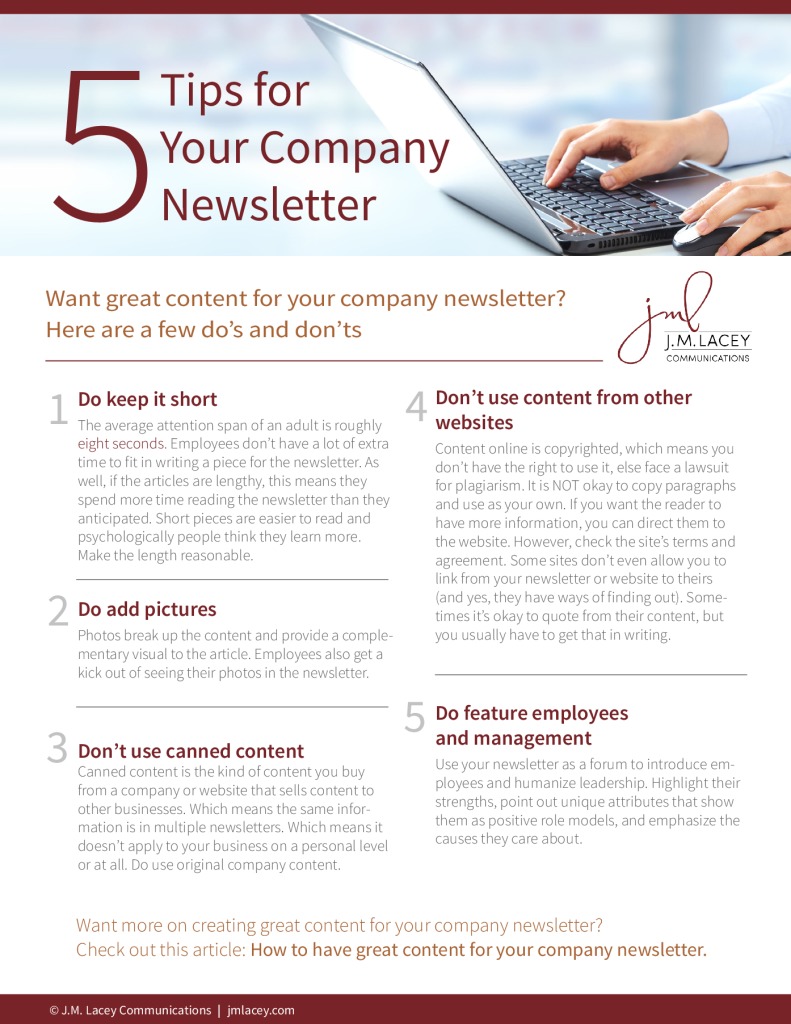
Creating corporate newsletters is a great way to run internal competitions that will get your staff involved and engaged with the company. Most people have a competitive side to them, and let’s be honest, everyone wants to impress their boss. The more relevant you make your design, the more likely you are to attract and maintain your readers’ attention. The goal is to make your staff read and engage with the newsletter’s content. ae domains or email retargeting, then you may want to select some designs that specifically link to the subject. If you’re an IT company and you’re including a section on. The trick is finding a balance in design that not only represents the occasion but also your company branding, incorporating elements of both. For example, if you’re using your corporate newsletter to spread the word about your upcoming Christmas party, it’s a good idea to choose a festive-themed design. The key is ensuring your newsletter design is relevant to the content. With a good editor and email templates, you can create an eye-catching newsletter design in a few minutes. Get the design rightĬorporate newsletters are very simple to design. Keep that in mind when you start planning your corporate newsletters. Good content writing is not just about what you say, but how you say it.

Speak to them in a way that they like to be spoken to. You already have the benefit of knowing your readers, so use that to your advantage. Remember that your staff gets inundated with information every day, so it is important that your content stands out from the rest.

Instead of writing it in a rigid (boring) way, use the relationship you have with your staff to create an engaging piece on the subject. Let’s say, for example, you want to use a section of your newsletter to educate your staff on new workflow processes. Related: ZeroBounce COO Brian Minick shares his best email newsletter tips So, (assuming you’re a friendly person, of course!) write it in the way you would usually speak to your staff. The goal of your newsletter is to offer value and make your staff feel included in your company. Just because you’re starting a corporate newsletter, it doesn’t mean that you should start speaking (or writing) in a corporate or formal way. If you don’t pay enough attention to tone, your newsletter is likely to fall flat on its face. Too many businesses get this terribly wrong. Bonus tip: before you send your next newsletter, make sure you validate your email list to avoid bounces and land in the inbox. I’ve got you covered with the following five tips.

I know what you’re thinking… this sounds great in theory, but how do I actually apply this to my communications? How can you convince them to read what you’ve got to say? It takes vigilant planning, consistent implementation, and a solid understanding of what your staff want to read. Think about it: your staff already spend a lot of time in their inbox.

Private company newsletters how to#
Related: How to write a stellar email newsletter When they’re done well, corporate newsletters can engage, inform and entertain your staff and in turn, boost morale and productivity. They are especially important for larger organizations where team members may rely on them to keep up to date with what is going on in the business. Put simply, a corporate newsletter contains company news and information to members of staff. Why do your employees need to read corporate newsletters?īefore I share my super easy and effective tips on writing corporate newsletters, it’s a good idea to understand why they’re so important. I’m here to help you create the kind of killer newsletter that your staff won’t just read, but will actually enjoy reading. Thinking of creating a corporate newsletter but don’t know where to start? Heard that corporate newsletters are the must-have tool for businesses but don’t quite know how they could benefit your company?


 0 kommentar(er)
0 kommentar(er)
